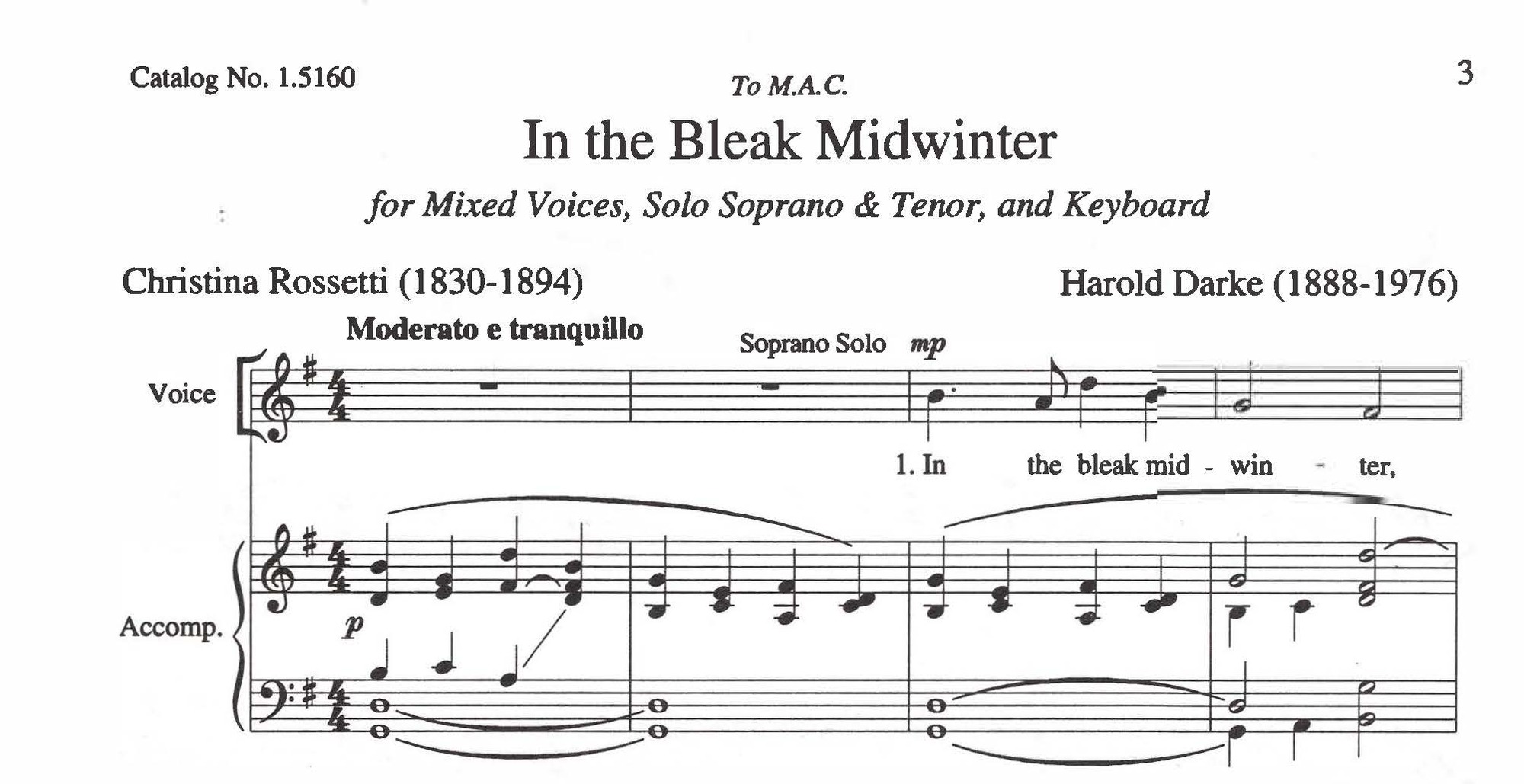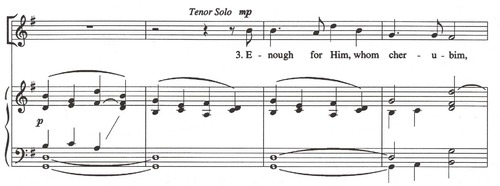The Beginnings of a Musical Legacy: Holst and Darke
Gustav Holst’s 1906 setting
The earliest-extant setting of “In the Bleak Midwinter” was actually a parlour song composed by Henry Bird Collins and published in an American music journal in 1903. But it was Gustav Holst’s 1906 setting for the English Hymnal that gave the carol true longevity. Holst was an up-and-coming composer at the time and would go on to write his famous orchestral suite “The Planets” a few years later. He was influenced by another Pre-Raphaelite artist, William Morris, particularly for his political and artistic conviction that art be accessible to all people (Holst 16). This principle was put into action when Holst wrote his setting of “In the bleak mid-winter.” The tune was called “Cranham,” named after a small English village Holst knew in his childhood (Short 55). Cranham was among three hymns Holst wrote for the English Hymnal, which was an ambitious project–the most influential hymnbook of the English Musical Renaissance–led by leading composer Ralph Vaughan Williams, and its goal was to provide simple, pious hymns for a mixed congregation. Vaughan Williams outlines this goal in greater detail in the preface:
… we have endeavoured to produce a book that shall suit the needs of learned and simple alike, and shall at the same time exhibit the characteristic virtue of hymnody, – its witness, namely, to the fact that in the worship of God Christians are drawn closer together as they are drawn more closely to the one Lord. In Christian song Churches have forgotten their quarrels and men have lost their limitations, because they have reached the higher ground where the soul is content to affirm and to adore. (iii)
In this context, the carol’s personal and individual poetic voice was transformed for a communion of professional and amateur voices to sing together in Christian worship. Holst’s setting gave congregations of people direct access to Rossetti’s poem. No longer was it reserved only for readers of Victorian poetry; with his Cranham tune, Holst would begin the process of “In the bleak mid-winter”’s transformation into art for all.
Harold Darke’s 1911 setting
While Holst’s setting popularized “In the Bleak Mid-winter” in a congregational context, Harold Darke’s would really be the one to institutionalize it as a hallmark of British heritage. Only a few years after Holst, Harold Darke published his own setting of “In the Bleak Midwinter” at the age of eighteen (Beechey 429). While the accessibility of Holst’s “Cranham” tune invites communal participation, Darke’s setting, in its beautiful complexity, suits an advanced choir more than a congregation. Only four of the five stanzas of the poem are set in this composition, and each verse varies slightly in melody. It also includes solos for tenor and soprano or treble. The setting is a reflection of Darke’s ambitious approach to choral music. In a speech given to the Royal College of Music in 1942, Darke declared: "we shall seek the best in music of all kinds and ages, always bearing in mind one essential factor -- its fitness and rightness for church worship -- and we shall ruthlessly destroy all which does not reach this ideal” (qtd. in Beechey 431). It’s rather appropriate, then, that in 2008, a BBC poll of music directors around the world voted Harold Darke's setting of "In the Bleak Midwinter" the greatest Christmas carol of all time.
Darke’s setting of "In the Bleak Mid-winter" began to be performed at the Festival of Nine Lessons and Carols at King's College in 1945, when Darke himself conducted the King's College Choir at the end of the war. The King’s College Choir at Cambridge has performed this festival annually since Christmas Eve, 1918 with a repertoire of both familiar and original carols, always beginning with "Once in Royal David's City." Since its debut on the program, “In the Bleak Mid-winter” has been included in nearly every year's program, usually Darke’s setting but occasionally Holst’s, solidifying it in the canon of British Christmas music. In her 2012 Christmas broadcast, the Queen even referred to the final lines of Rossetti’s poem, the question "What can I give Him, poor as I am?” and the response, "Yet what I can I give Him: give my heart."
Sources:
Beechey, Gwilym. “Harold Darke's Church Music.” The Musical Times, vol. 129, no. 1746, 1988, pp. 427–431. JSTOR, www.jstor.org/stable/965989. Accessed 11 Dec. 2020.
Holst, Imogen. Gustav Holst. Oxford University Press, 1969.
Short, Michael. The Man and his Music. Oxford University Press, 1990.
Vaughan Williams, Ralph. "Preface." The English Hymnal, Oxford University Press, 1906, pp. iii-xxiv.




